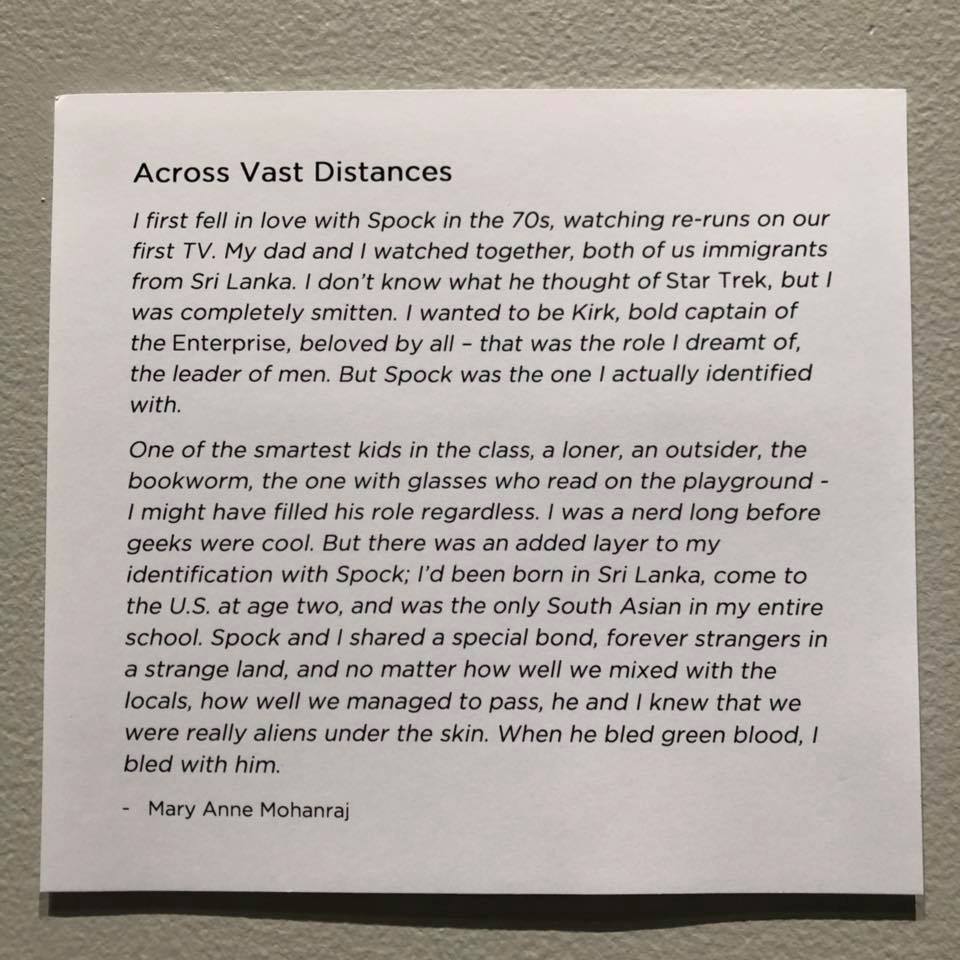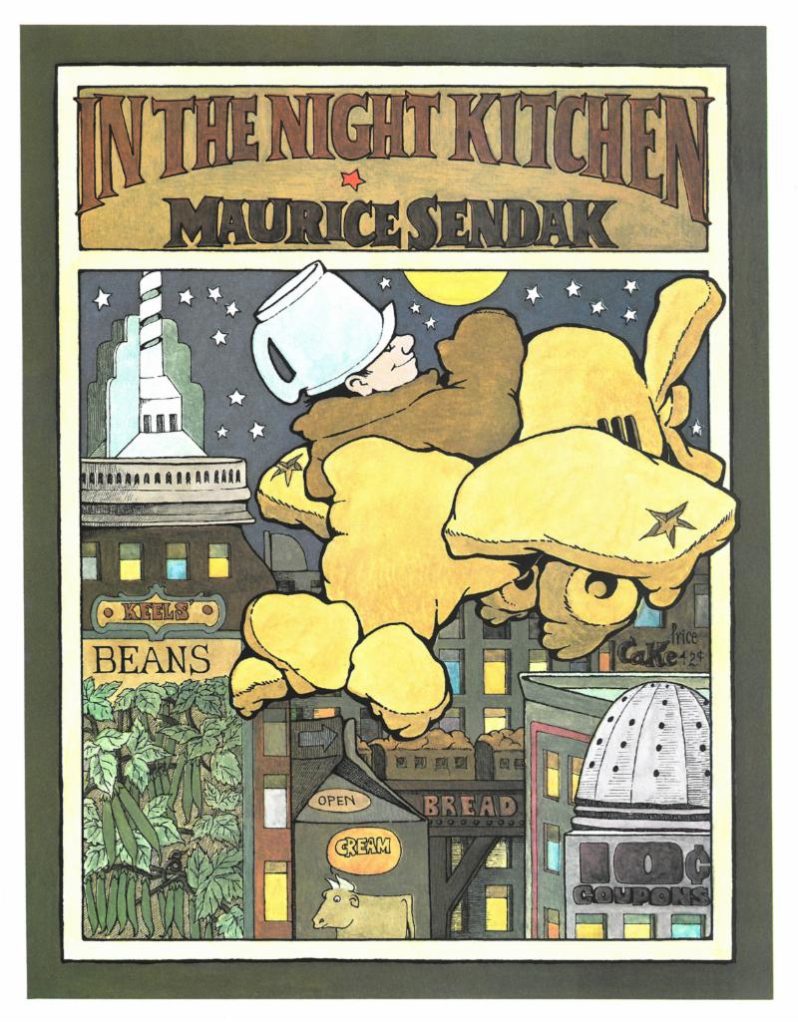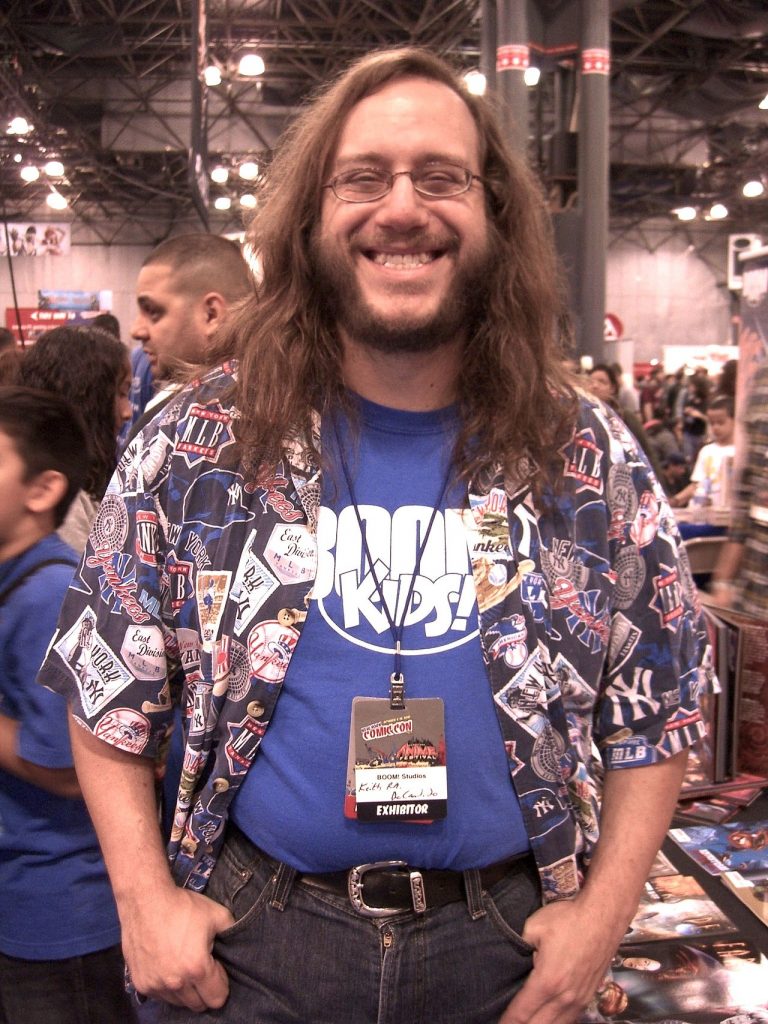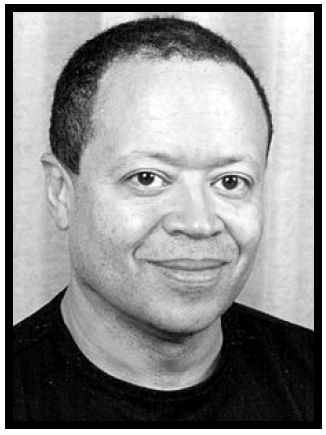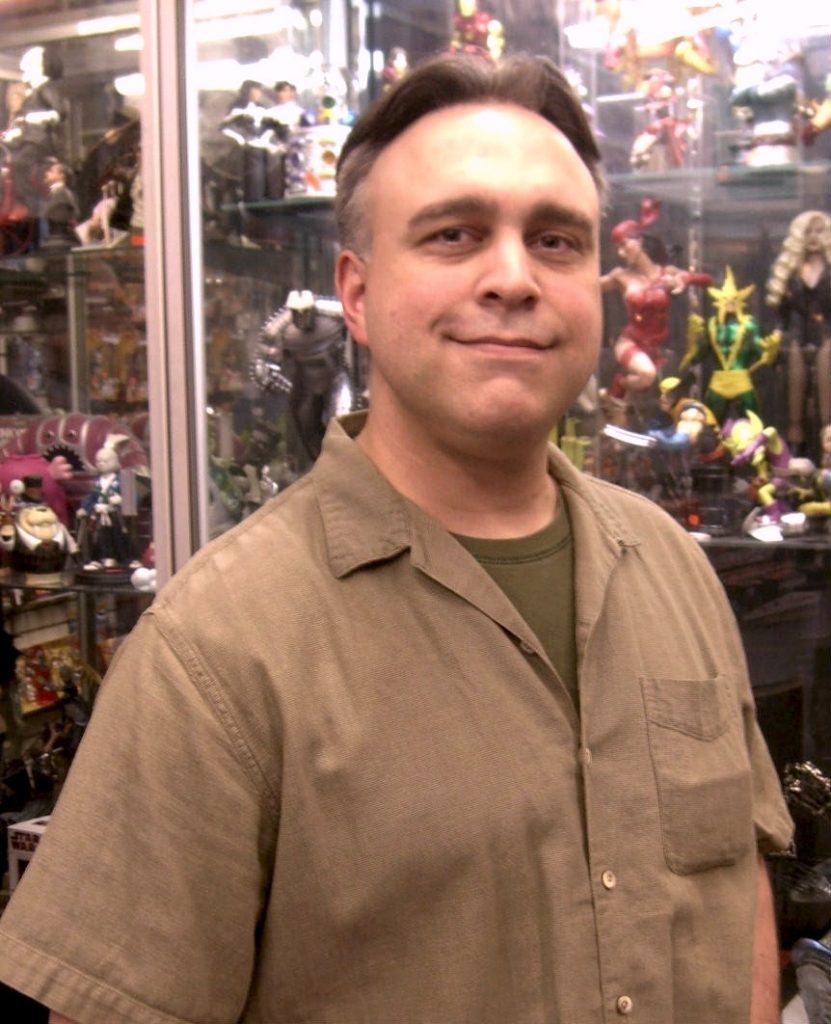(1) EUROVISION. In “Eurovision 2019 Is Here: Science Fiction Fans, Rejoice!”, Tor.com’s James Davis Nicoll supplies plenty of examples to show that “Although Eurovision itself may not be exactly SF, some of the pieces are definitely science fiction-adjacent. The visuals are often glorious, and the show as a whole is well worth viewing.”
(2) THEY’RE BACK. The Bounding Into Comics Facebook group was restored on May 9. Supposedly they still don’t know why it was shuttered, apart from a notice that they had violated “the Facebook Statement of Rights and Responsibilities.”
…As you can see the last post was our Spider-Man: Far From Home trailer article, which was posted on May 6th.
When we asked for further clarification on why the page was taken down. We did not receive a response.
While it’s still unclear exactly why Facebook took down our page, we are glad that it has been restored. And we are extremely grateful and truly humbled by the fan support we received after the page was taken down.
While we are happy to continue publishing to our Facebook audience. We do plan on continuing to grow our presence on other social media platforms including MeWe and Gab.
(3) LOCUS COLLECTION PRESERVED. Duke University Libraries announced a prized acquisition — “Locus Collection Tracks the Stars and Universe of Sci-Fi”.
The David M. Rubenstein Rare Book & Manuscript Library at Duke University has acquired the archives of the Locus Science Fiction Foundation, publisher of Locus, the preeminent trade magazine for the science fiction and fantasy publishing field.
The massive collection—which arrived in almost a thousand boxes—includes first editions of numerous landmarks of science fiction and fantasy, along with correspondence from some of the genre’s best-known practitioners, including Isaac Asimov, Arthur C. Clarke, Ursula K. Le Guin, Harlan Ellison, Octavia E. Butler, James Tiptree, Jr. (Alice Sheldon), Dean Koontz, Robert A. Heinlein, and hundreds more.
…A tireless advocate for speculative fiction, [founder Charles N.] Brown was also a voluminous correspondent and friend to many of the writers featured in the magazine. Many of them wrote to him over the years to share personal and professional news, or to quibble about inaccuracies and suggest corrections. The letters are often friendly, personal, humorous, and occasionally sassy.
Reacting to a recent issue of Locus that featured one of her short stories, the science fiction writer Octavia E. Butler wrote, “I am Octavia E. Butler in all my stories, novels, and letters. How is it that I’ve lost my E in three places in Locus #292? Three places! You owe me three E’s. That’s a scream, isn’t it?”…
(4) ANOTHER COUNTY HEARD FROM. The New York Times’ Glenn Kenny works hard to resist the movie’s charms in “‘Tolkien’ Review: A Fellowship That Rings Obvious”.
Directed by Dome Karukoski from a script by David Gleeson and Stephen Beresford, this picture about the pre-fame days of the author of “The Hobbit” and “The Lord of the Rings” teems with many on-the-nose moments. And it does so while hewing so strongly to the Distinguished British Biopic ethos (including the “England: Land of Magnificent Sunsets” trope) that it teeters on the edge of genuine obnoxiousness. Surprisingly, the emphatic score by the customarily more nuanced Thomas Newman is one of the prime offenders.
Nevertheless, “Tolkien” manages several scenes of credible emotional delicacy. And it doesn’t shy away from the conspicuously literary, treating the writer’s explorations of Wagner (sparked by his love interest and future wife Edith, played by Lily Collins) and passion for philology (sparked by chats with the intimidating professor Joseph Wright, played by Derek Jacobi) with a commendable amount of detail.
(5) SOMETHING FOR YOUR BRAIN’S POKÉMON CENTER. NPR’s Vincent Acovino calls “‘Pokémon Detective Pikachu’ — Go!”
Have you ever questioned the moral fabric of the Pokémon universe?
Sure you have. For starters: In what kind of world would “Pokémon battles” — in which two humans force two excessively cute creatures to a fight until one of the beasts faints — constitute an acceptable social convention? And isn’t the whole Trainer/Pokémon relationship more than a little … problematic? Who decided that wild Pokémon, who demonstrate a level of intelligence several degrees above that of other animals, should live out their lives under the constant fear of capture and exploitation by humans?
Your enjoyment of Pokémon Detective Pikachu will likely depend on your degree of investment in these sorts of existential questions.The strength of the film lies in the way it playfully undermines the Poké-verse, poking holes in a thing that, when reduced to its essentials, seems just real silly. Much like last year’s Spider-Man: Into The Spider-Verse, Pokémon Detective Pikachu looks itself in the mirror and remarks on what it sees there. And while it doesn’t pull off the trick nearly as well, there’s something admirable about a film that isn’t afraid to have some fun with a property so established — and beloved — by its core audience.
(6) ALL THE BEST: Following Paula Guran’s announcement of the contents of The Year’s Best Dark Fantasy & Horror: 2019, Jason has completed his “Collated Contents of the Year’s Bests (2018 Stories, Links)” over at Featured Futures.
Welcome to the third annual linked collation of annuals or “year’s bests.” As the contents of the Afsharirad, Clarke, Datlow, Guran, Horton, and Strahan science fiction, fantasy, and horror annuals have been announced, they have been combined into one master list with links to the stories which are available online. (The only one not yet integrated is the BASFF, which will likely be announced late in the year.) Hopefully, you’ll enjoy some of them and that will help you decide which annual or annuals, if any, to purchase.
(7) VAMPIRELLA’S PRIEST. Christopher Priest is writing Vampirella comics now. ComicsBeat questioned him about it — “Why Priest Added Vampirella to His Iconic List”
Deanna Destito: Before jumping into this, were you a Vampirella fan? What appealed to you about this project?
Christopher Priest: No, I wouldn’t call myself a Vampirella fan (which is sure to annoy Vampirella fans!), although I was certainly aware of the character. But I’d guess I viewed the property nostalgically. Fondly, for sure, but if I thought of Vampirella at all I thought of her in a kindly past-tense, as an artifact of the 1970s and my misspent youth….
(8) BEHIND THE SCENARIOS. I learned from this interview there’s a book of notes, too! “Getting Transreal: An Interview with Rudy Rucker” at B&N Sci-Fi & Fantasy Blog.
Your companion book, Notes for Million Mile Road Trip, is actually longer than the novel! The idea of following up reading a novel with that kind of metadata is fascinating; can you tell us more about it?
It’s hard to write a novel. It takes a year or maybe two years of tickling the keyboard at your desk or using a laptop in a cafe, and doing that pretty much every day, even on the days when you don’t know what comes next. This is where writing a volume of notes comes in. When I don’t have anything to put into the novel, I write something in the notes. I might analyze the possibilities for the next few scenes. Or craft journal entries about things I saw [that day]. Or describe some the people sitting around me, being careful not to stare at them too hard. Or think about how hopeless it is to try to write another novel, and how I’ve been faking it all along anyhow. The more I complain in my notes, the better I feel. I publish the finished Notes in parallel with with the novel, not that I sell many copies of the notes. Long-term, the notes will be fodder for the locust swarm of devoted Rucker scholars who are due to emerge any time now from their curiously long gestation in the soil.
(9) LORD WINSTON OBIT. Zombie Squad, an international network of dogs and other pets dedicated to protecting society from the walking dead, paid its respects on Saturday to Lord Winston, the indefatigable West Highland terrier who inspired the group’s creation in 2013 and had served as its official leader until his death on 21 April, aged nearly 15. Despite losing the use of his back legs following a series of operations, Lord Winston – via his British owner – posted daily messages and regular videos on Twitter, where prospective new members continue to be welcomed at @ZombieSquadHQ.
(10) TODAY’S BIRTHDAYS.
[Compiled by Cat Eldridge.]
- Born May 10, 1863 — Cornelius Shea. As the authors of SFE put it, “author for the silent screen and author of dime novels (see Dime-Novel SF), prolific in many categories but best remembered for marvel stories using a fairly consistent ‘mythology’ of dwarfs, subterranean eruptions, and stage illusion masquerading as supernatural magic.” To my surprise, only two of his novels are in the Internet Archive.
- Born May 10, 1886 — Olaf Stapledon. Member of the Science Fiction and Fantasy Hall of Fame. Star Maker contains the first known description of what are now called Dyson spheres. (Neal Asher currently is making the best use of these in his Polity series.) He wrote about a baker’s dozen novels of which iBooks has pretty much everything available at quite reasonable prices. I know I read and enjoyed Star Maker many years ago but don’t recall what else I read. (Died 1950.)
- Born May 10, 1895 — Earl Askam. He played Officer Torch, the captain of Ming the Merciless’s guards, in the 1936 Flash Gordon serial. It’s his only genre appearance though he did have an uncredited role in a Perry Mason film where the SJW credential was the defendant in a Perry Mason murder case, The Case of Black Cat. (Died 1940)
- Born May 10, 1899 — Fred Astaire. Yes, that actor. He showed up on the original Battlestar Galactica as Chameleon / Captain Dimitri In “The Man with Nine Lives” episode. Stunt casting I assume. He had only two genre roles as near as I can tell which were voicing The Wasp in the English language adaptation of the Japanese Wasp anime series, and being in a film called Ghost Story. They came nearly twenty years apart and were the last acting roles he did. (Died 1987.)
- Born May 10, 1935 — Terrance Dicks, 84. He had a long association with Doctor Who, working as a writer and also serving as the programme’s script editor from 1968 to 1974. He also wrote many of its scripts including The War Games which ended the Second Doctor’s reign and The Five Doctors, produced for the 20th year celebration of the program. He also wrote novelisation of more than 60 of the Doctor Who shows. Prior to working on this series, he wrote four episodes of The Avengers and after this show he wrote a single episode of Space: 1999 and likewise for Moonbase 3, a very short-lived BBC series.
- Born May 10, 1963 — Rich Moore, 56. He’s directed Wreck-It Ralph and co-directed Zootopia and Ralph Breaks the Internet; he’s has worked on Futurama. Might be stretching the definition of genre (or possibly not), but he did the animation for “Spy vs. Spy” for MADtv. You can see the first one here:
- Born May 10, 1969 — John Scalzi, 50. I’ve enjoyed everything I’ve ever read by him. What would I recommend if you hadn’t read him? The Old Man’s War series certainly as well as the Interdependency series are excellent. I really have mixed feelings about Redshirts in that it’s too jokey.
(11) COMICS SECTION.
- Close to Home does a cute tech support joke.
(12) MARVEL 1000. Marvel’s celebration of its 80th Anniversary will include a new epic comic book issue to celebrate the legacy of the Marvel Universe: Marvel Comics #1000.
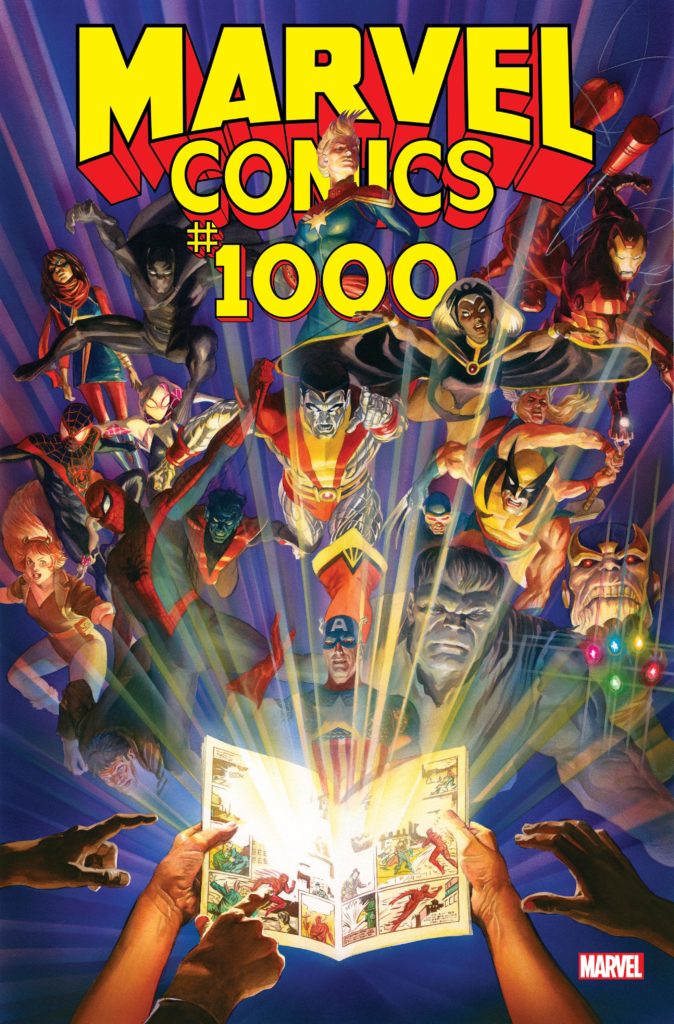
Featuring 80 creative teams with luminaries from both classic and current comic books (and beyond!), this oversized one-shot will be packed with pages spanning across generations of Marvel’s iconic Super Heroes – with cover art from legendary artist Alex Ross!
Among those individuals, some of whom teased the project on social media this week, are long-time Marvel veterans — including Roy Thomas, Peter David, Gerry Conway, and Adam Kubert — and current creators — including Saladin Ahmed, Gail Simone, Chip Zdarsky, and Kris Anka — as well as talents outside of comics, like filmmakers Phil Lord and Christopher Miller, Taboo of the Black Eyed Peas, and basketball legend Kareem Abdul-Jabbar.
(13) THE WORD FROM PORTALES. Locus Online’s “2019 Williamson Lectureship Report” quotes GoH Alex Rivera, criminalist Cordelia Willis (daughter of Connie) and others —
“We’re living in a time of walls,” said filmmaker Alex Rivera when introducing Sleep Dealer at the start of the 43rd Williamson Lectureship April 4-6, 2019 in Portales NM. “It’s a global obsession. How do we tell stories in such a world? In my film, I try to cross the consciousness of walls by looking at them, through them, and beyond them.”
(14) 124C41. Hephzibah Anderson’s profile of John Brunner focuses on his novel Stand on Zanzibar (taking the typical “sci-fi predicted it, gosh!” angle) in today’s BBC Culture post “The 1969 sci-fi that spookily predicted today”.
…Though it divided critics on publication, Zanzibar has come to be regarded as a classic of New Wave sci-fi, better known for its style than its content. This seems a pity. When an excerpt appeared in New Worlds magazine in November 1967, an editorial claimed that it was the first novel in its field to create, in every detail, “a possible society of the future”.
There’s irony in some of what Brunner got wrong. He assumed, for instance, that the US would have at last figured out how to provide adequate, inexpensive medical care for all by 2010. Other inaccuracies are sci-fi staples – guns that fire lightning bolts; deep-sea mining camps; a Moon base. And yet, in ways minor and major, that ‘future society’ nevertheless seems rather familiar today. For example, it features an organisation very similar to the European Union; it casts China as America’s greatest rival; its phones have connections to a Wikipedia-style encyclopaedia; people casually pop Xanax-style ‘tranks’; documents are run off on laser printers; and Detroit has become a shuttered ghost town and incubator of a new kind of music oddly similar to the actual Detroit techno movement of the 1990s.
(15) NEBULA REVIEWS. A full rundown of all the nominees for “The 2018 Nebula Awards” is preceded by an analysis of this year’s kerfuffle at Ohio Needs A Train.
The accusations of slate-building, especially as it’s so close to the Hugos being basically completely turned aside for a couple of years there by slating antics 4, led to tensions running fairly high and people running fairly hot on the issue. The SFWA, for its part, says that it wants to take this sort of thing seriously and is looking into ways to try to keep stuff like this from taking over, without (as of the time of this writing) mentioning what steps it may be taking. I suppose that’s fine, but it’ll be interesting to see if anything is different about the nomination process next year.
(16) LODESTAR REVIEWS. Lodestar Award Finalist Reviews by Sarah Waites at The Illustrated Page.
- The Belles by Dhonielle Clayton
- Children of Blood and Bone by Tomi Adeyemi
- The Cruel Prince by Holly Black
- Dread Nation by Justina Ireland
- Tess of the Road by Rachel Hartman
(17) FANTASY LITERATURE’S NOVELLA HUGO REVIEWS. Despite the name, the Fantasy Literature site reviews science fiction, fantasy, and speculative horror, as well as comics and graphic novels.
Best Novella
- Artificial Condition by Martha Wells by Tadiana Jones and Kat Hooper
- Beneath the Sugar Sky by Seanan McGuire by Tadiana Jones
- Binti: The Night Masquerade by Nnedi Okorafor by Marion Deeds (last review at the bottom of the page)
- The Black God’s Drums by P. Djèlí Clark by Tadiana Jones and Jana Nyman
- Gods, Monsters, and the Lucky Peach by Kelly Robson by Tadiana Jones
- The Tea Master and the Detective by Aliette de Bodard by Tadiana Jones
(18) WRIGHT OF WAY. Steve J. Wright has completed his Best Novelette Hugo Finalist reviews
Novelette
- “If at First You Don’t Succeed, Try, Try Again,” by Zen Cho
- “The Last Banquet of Temporal Confections,” by Tina Connolly
- “Nine Last Days on Planet Earth,” by Daryl Gregory
- The Only Harmless Great Thing, by Brooke Bolander
- “The Thing About Ghost Stories,” by Naomi Kritzer
- “When We Were Starless,” by Simone Heller
(19) SPACE PASTA. SYFY Wire reveals “Saturn’s rings are hiding moons shaped like frozen ravioli. Here’s why.”
Even from beyond its cosmic grave, NASA’s Cassini spacecraft continues to amaze us with the things it unearthed during its Saturn flybys — like the moons that have been lurking in its rings for billions of years.
When Cassini ventured as close as it would ever get to Saturn, it imaged the moons (which look like space ravioli) in enough detail to reveal that they were covered in the same stuff as its iconic rings. Some of them were even blasted with icy particles from nearby Enceladus. The posthumous images from Cassini’s flyby have given scientists unprecedented close-ups of these really weird satellites.
(20) CRIMESTOPPER. Keith R.A. DeCandido’s Great Superhero Movie Rewatch reaches the films inspired by Chester Gould’s iconic cop — “’Contact Dick Tracy at once’ — RKO’s Dick Tracy Features” at Tor.com.
While he’s pretty much a pop-culture footnote in the 21st century, Dick Tracy was a household name in the 20th. Created by Chester Gould for the eponymous comic strip in 1931, Dick Tracy saw the hard-boiled detective stop a bunch of over-the-top criminals with cutting-edge technology. Gould foresaw the advent of smart-watches with Tracy’s “two-way wrist radio,” and the character was hugely popular.
It wasn’t long before Tracy was adapted to the big screen, first with movie serials in the 1930s and then four one-hour feature films in the 1940s….
[Thanks to Steve Green, Jason, John King Tarpinian, Mike Kennedy, Carl Slaughter, Andrew Porter, Martin Morse Wooster, JJ, mlex, Cat Eldridge, and Chip Hitchcock for some of these stories, Title credit belongs to File 770 contributing editor of the day Jayn.]




